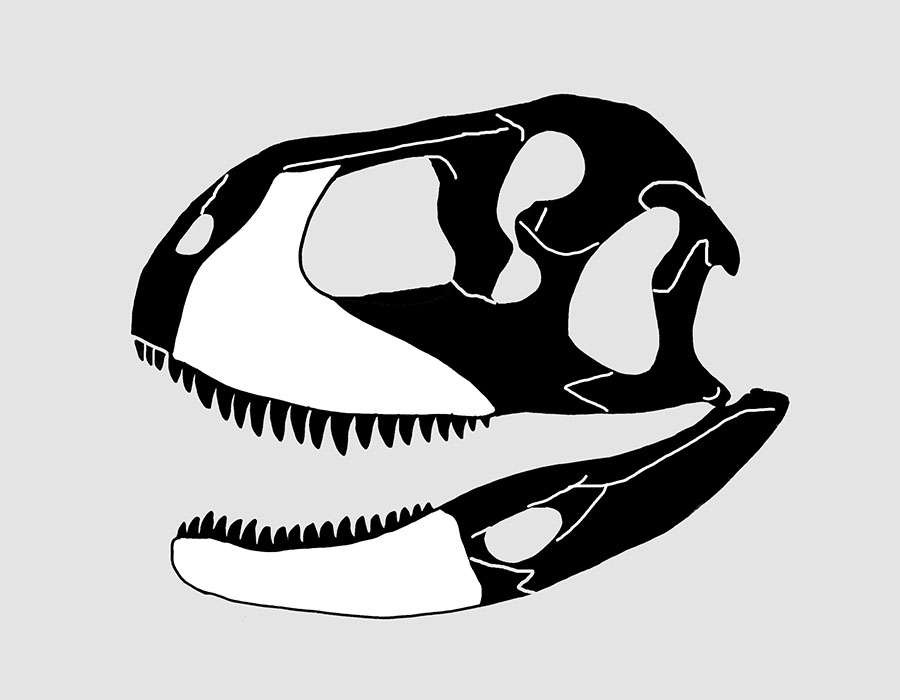
Genus: Ekrixinatosaurus CALVO, RUBILAR-ROGERS & MORENO, 2004
Etymology: Greek, ekrixi, "explosion," Latin, nato, "born"; referring to the
fact that the fossil was discovered after it's rocky tomb wasdynamited, and
Greek, sauros, "lizard": Explosion born lizard.
Species: novasi CALVO, RUBILAR-ROGERS & MORENO, 2004
Etymology: In honor of Dr. Fernando Novas for his important contributions
to the study of abelisaurid theropods.
Holotype: MUCPv-294
Locality: Due to the excavations for building a gas pipeline (Gasoducto del Pacifico Company) in Bajo del Anelo, Neuquen Province, Argentina.
Horizon: Candeleros member, Rio Limay Formation.
Biostratigraphy:
Age: Aptian Stage, Middle Gallic Subepoch, Upper Gallic Subepoch-Cenomanian Stage?, Uppermiddle Gallic Subepoch, Lower Gulf Epoch, Middle Cretaceous.
Material: Left and partial right maxillae, basicranium, both dentaries, teeth cervical, a dorsal, sacral and caudal vertebrae, haemal arches, ribs, ilia, pubis and proximal ischia, left and distal end of right femur, left tibia, left astragalus and calcaneum, proximal end of left fibula an dright tibia, metatarsals, phalanges and a pedal ungual.

Ekrixinatosaurus novasi (after CALVO, et al., 2004), Holotype: MUCPv-294